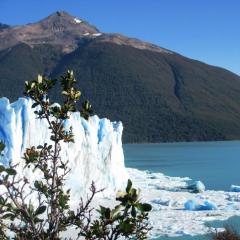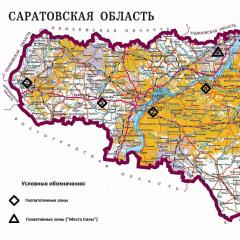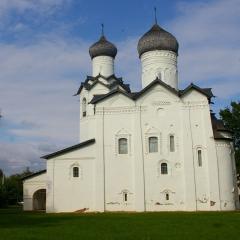Spontaneous tour of the MCC: a life hack for the curious. Spontaneous tour of the MCC: a life hack for the inquisitive MCC train tour schedule
On a tour of the MCC, you will learn about the history of the construction of the District Railway, about the origin of the names of the stations, about the events that took place on the territory of the regions adjacent to the Moscow Central Circle: about the childhood of Peter the Great and his famous Kozhukhov campaign, about what happened before on the territory of the ZIL plant, and what we will see there in the near future, about where M. N. Ermolova was buried, why the Rostokinsky aqueduct was called the "millionth bridge", and what Tanya Rostokinskaya became famous for.
The tour is free of charge (fare is not included in the tour). Travel to the MCC can be paid using tickets ("Single", "90 minutes", "Troika"). There is a free transfer between the Moscow Metro, the Moscow Monorail and the Moscow Central Circle within 90 minutes after the first pass through the turnstile.
Until the spring of 2017, excursions were free of charge, now the cost is: 300 rubles, preferential* - 250 rubles.
Each participant is given a radio guide for excellent audibility. We recommend bringing your own headphones. You must have a deposit of 1000 rubles with you. or an identity document. Equipment must be returned after the tour.
Five months have passed since the opening of traffic along the Moscow Central Ring. Comfortable red electric trains have already ceased to be perceived as exotic, but have become a familiar mode of transport for many. But still, not all Muscovites and guests of the capital managed to ride around the entire ring. I had some free time, and I decided to make a full circle.
2. The height of the working day, there are not very many people, but you can’t call empty platforms either. , transition to the metro station "Avtozavodskaya". 
3. "Swallows" go often. 
4. Who ordered a taxi to Dubrovka? Today we will go by train. 
5. Basically, the route of the MCC passes through industrial areas. There are unexpectedly many hypermarkets and shopping centers along the way. 
6. A new Zilart quarter is being built somewhere around here. 
7. Promised hack:
Previously, it was possible to travel around the MCC with a free tour. I'm sorry I never got around to getting out. For those who could not take a ride with a tour, the management of the Moscow Metro promised to launch an audio guide by the end of 2016, unfortunately, I did not find it. I suspect that the audio guide was never made.
But, having searched for information on the net, I found a page with a good amateur audio tour. The tour consists of 30 fragments, carefully divided into stages. It is very convenient to go and listen to what is outside the window.
The audio tour is a bit outdated, since several previously closed stations have opened since the recording, but the information is still useful and interesting. Thanks to the authors!
Link to audio tour of the MCC: https://vk.com/audios-129204178, make yourself comfortable by the window and enjoy. That's exactly what I did. 
8. Shopping complex "City". 
9. Do not forget that the MCC is the brainchild of not only the metro, but also Russian Railways. Therefore, lovers of diesel locomotives and other trainspotting will find a lot of interesting things for themselves. If only the windows were cleaner. 
10. Some more railway equipment. 
11. Hotel "Izmailovo", the MCC station of the same name is located very close. 
12. Note to non-residents. 
13. Izmailovsky Kremlin. There is a good view of it. 
14. Somewhere in the area of the former Cherkizon. 
15. It is interesting to observe not only the city, but also the people. 
16. "Moose Island". 
17. Another shopping center. 
18. 
19. "Swallow" rides very quietly and smoothly, you can take a nap. At the same time, at times the electric train accelerates to almost 100 kilometers per hour. 
20. Snow is removed. 
21. We arrived at Vladykino. 
22. 
23. 
24. We pass by the Botanical Garden. From here you can see perfectly. 
25. We pass the Swallow's Nest. 
26. Platform "Sorge", named after the famous Soviet intelligence officer. 
27. CSKA Stadium with a building in the shape of the UEFA Cup. 
28. We are approaching Moscow City. Station "Business Center". 
29. This station was nicknamed the "Emerald City". An amazing and absurd architectural solution. 
30. We drive away from the City. 
31. Moscow is always somewhere. 
32. 
33. We are moving. We see the center of Moscow, the Crimean bridge and the monument to Peter the Great. 
34. Moscow city graffiti. 
A little more and I get off at the same station where I landed. Travel time is approximately 80 minutes.
This is such a spontaneous tour. There is an idea to ride again when it gets warmer, you will need to prepare and wash the window in the train.
By the way, the Museum of Moscow conducts official tours of the MCC.
Ticket price - 300 rubles, the schedule is on the museum website.
If you go on your own, then the tour will be very cheap, remember that the transfer from the metro to the MCC is free, and the audio tour is available on the Internet. A great option for walking and exploring the city, even for those who live in it. You can start and end the tour anywhere, without depending on anyone.
Russian Railways, together with the Museum of Moscow, launched tours of the MCC. You need to register for the tour on the website or by phone - this is how the first problems appear for me. The link provided on the official website of the subway does not work, and the phone for recording has been busy all three hours that I have been trying to get through. “Well, I’ll go without registration,” I decide and go to TPU Luzhniki.
Here is my second surprise. At the information desk, a huge crowd of losers like me are arguing furiously with an employee of the subway and arguing that it is simply impossible to register for a tour. The girl politely tries to explain that registration ended yesterday and the next free day is Monday. But who cares about the rules in Moscow?
“Where is the guide, we’ll go like this, let me go!” some shout. “Urgently give the book of complaints! We arrived in half an hour, from Mitino, by the way, do you even know how far it is? others do not calm down.
The problem cannot be solved - the number of places is limited.
Audio guide
Maria Borisova/Gazeta.RuYou can't get on the tour without registration. But I have no choice, tomorrow I have to hand in the text, so I still go without registration. At the exit from the metro, two groups of 30 people gather, the guide announces the list of those present by name and issues audio guides (you need to leave documents or 1 thousand rubles as a deposit). As it turned out later, all 60 people registered without any problems, just in a different place - on the website of the Museum of Moscow, which conducts the tour. We also received an SMS with the time and place of the meeting. Lucky them. I will have to stand behind the guide for an hour and a half and receive comments from disgruntled passengers, for whom I will block the exit.
Travel around the MCC begins in the first car on the platform towards the station Gagarin Square. The tour is led by historian Larisa Skrypnik, the second group is traveling in the next carriage.
This is my first time on the central ring, so I immediately begin to carefully study the situation. There are no complaints about the train: comfortable seats, not stuffy, large windows, only the promised Wi-Fi is missing, however, now this worries me a little.
The tour involves almost an hour and a half journey, including industrial zones. And this is perhaps the most interesting.
 Maria Borisova/Gazeta.Ru
Maria Borisova/Gazeta.Ru
Despite the fact that I was born in Moscow and have been living here all my life, I have not yet been in industrial zones. cultural events on the same Ugreshskaya, about which later, do not pass, there are no good restaurants there either. So the trip around the MCC is an interesting opportunity to look at Moscow from a side unfamiliar to me.
Let's go. Outside the window you can see the building and the dome of the temple. Larisa begins her story about Andreevsky Bridge and Komsomolsky Prospekt, where back in the 50s of the last century there were vegetable gardens. We pass an underground tunnel, a monument, and then - the hospital. ON THE. Alekseev, better known to the people as Kashchenko.
The first stop of the industrial zone is the station Upper Boilers.
During the time of Peter I, the fourth defensive fortification Kamer-Kollezhsky Val appeared here - a customs border that protected Moscow from the import of contraband goods - for example, vodka.
Since quite a lot of industrial enterprises were formed around the Kamer-Kollezhsky Val, where people not only worked, but also lived, they were included in the number of Muscovites, the road became much longer.
By the way, in Soviet times, a large number of enterprises were also built along this road, one of the largest - Zavod im. Likhachev. Construction began back in 1916, when entrepreneurs, the Ryabushinsky brothers, realized that the future was in cars. But it was not possible to bring the matter to the end, and the plant was completed already in Soviet times. In the 30s, he received the name of Stalin and began to be called "ZIS", but after the debunking of the cult of personality, it was renamed the Plant. Likhachev -. The view outside the window is horrendous. It is hard to believe that this is Moscow. Larisa talks about the plans for the development of this place - the construction of new residential complexes, cultural and sports facilities. I approve.
Meanwhile I'm driving up to Dubrovka. Outside the window is an industrial landscape. Once upon a time there were no high-rise buildings and industrial enterprises here, but there was the village of Kozhukhovo, famous for the famous Kozhukhovsky campaign of Peter I - here the tsar tested and trained Streltsy troops.
Here Ugreshskaya. The name seemed frightening to me even when studying the list of stations. And not in vain. The place, to be honest, is unattractive - solid buildings of railway stations.

Ugreshskaya
Maria Borisova/Gazeta.RuThe buildings on the left have been restored - they serve the needs of the railway services, so you can't get there.
The station got its name because of the Ugresh highway, which leads to the Nikolo-Ugreshsky Monastery. According to legend, it was here, moving with his army to the Kulikovo field, that he saw the image of Nicholas the Wonderworker, which inspired him to believe in victory.
Arriving at Novokhokhlovskaya and move to the side Nizhny Novgorod. Left and right landscapes are gloomy. Once there were industrial zones here, some of them are still preserved.
An interesting fact: the territories adjacent to the Moscow District Railway were built up with factory enterprises, which accounted for 17% of the city's territory. Now they are being actively explored.
Since the factories have been here for decades and produce heavy machine tools, air defense equipment and refrigeration plants, the ground on which they are located is saturated with mercury, phosphorus and other waste several meters deep.

Nizhny Novgorod
Maria Borisova/Gazeta.RuJust in time, Larisa begins a new story about the wind rose. It turns out that due to the fact that in Moscow the winds blow mainly from the northwest to the southeast, industrial enterprises were built precisely in the south so that the winds did not drive the exhaust from the pipes to the entire capital.
crossing Highway Enthusiasts, I remember the lessons of history about the times of the Decembrists - the road "Vladimirka" begins, along which prisoners were driven to hard labor in Siberia. The spectacle was very difficult - people walked several thousand kilometers, chained to each other. Approximately in the place where the station is located, they were escorted on their way when they left the city. “In Soviet times, in memory of the fact that they suffered here for the freedom of the people, moving to Siberia, the highway was called “Enthusiasts,” the guide adds.

Highway Enthusiasts
Maria Borisova/Gazeta.RuLet's go further. From the station window Locomotive I see the stadium. The history of the building is interesting: in the 1930s there was a “Stalinets”, which existed until the debunking of the cult of personality, then it was demolished and the “Locomotive” was built - it was run and lasted almost 50 years. In 2000, a new stadium was built, which is now considered the most modern among the existing ones.
Next stop - Vladykino. Again I remember the school course of history. The name goes back to the reign of Tsar Alexei Mikhailovich and Patriarch Nikon. Here, on the territory of the Epiphany Monastery, apple orchards once grew, which Vladyka greatly loved. This is how the station got its name.

Vladykino
Maria Borisova/Gazeta.RuNothing reminds of the fact that once there was a countryside here, but behind the metal fence you can see the old buildings of the district railway.
By the way, when the road just started working, Muscovites traveled along it, too, as if on an excursion. At this station, you want to get out and study the situation in detail, there are a lot of interesting buildings. Previously, there were houses for railway employees, signalmen and lamp workers. There were water towers for refueling trains, ticket offices, waiting rooms for 3rd class passengers.
When approaching Likhoboram Larisa talks about the appearance of the Moscow ring road, and I conclude that the MCC could have taken place earlier. The last point of the "industrial route" is the station Shelepikha. The panoramas are, to be honest, creepy, but they are definitely worth seeing, at least in order to know that Moscow is not limited only to the restored Tverskaya and the bars of the Patriarchs.
Free tours of the Moscow Central Circle (MCC) will be held for passengers daily on weekdays until October 10, 2016.
An excursion route for passengers has been launched on the Moscow Central Circle. Muscovites and guests of the capital will be able to learn about the sights of Moscow, passing around the MCC in the Lastochka train. The first free tours took place on the day the passenger traffic was launched and were in great demand among the townspeople. On September 12, a free tour starts from the Luzhniki TPU at 16:00. Such cognitive walks on Lastochka will be held regularly throughout the month, from Monday to Friday.
Passing along the MCC, Muscovites and guests of the capital will be able to see the Frunzenskaya Embankment, the Moscow City complex, VDNKh, the Luzhniki sports arena, and the Vorobyovy Gory nature reserve. During the trip, the sightseers will be told about the history of the Moscow District Railway, starting from its launch at the beginning of the 20th century. In total, there are about 86 architectural monuments of the Moscow District Railway, and all these objects can be observed from the windows of Lastochka. The tour lasts approximately 84 minutes. This is the travel time of Lastochka along the MCC, taking into account stops.
The solemn launch of passenger traffic on the MCC took place on September 10, 2016, on City Day. The ceremony was attended by Russian President Vladimir Putin and Moscow Mayor Sergei Sobyanin.
Muscovites and guests of the capital will be able to use 26 stops of the MCC, the remaining five stops are planned to be launched before the end of 2016. According to expert estimates, the MCC will provide transportation for about 75 million passengers in the first year of operation and 120 million people by 2020. Passenger traffic in 2025 will increase to 300 million people. In total, there will be 31 stations on the ring, at 17 stations it will be possible to transfer to 11 metro lines, at 10 stations to transfer to commuter trains. Of the 75 million people who are planned to be transported to the MCC in the first year, almost half will be metro passengers (34.5 million people), 20.2 million people - railway transport, 12.7 million - buses, 7.5 million passengers - residents of nearby houses.
MCC passengers will travel by Lastochka trains, the train interval will be from six minutes during peak hours and 11-15 minutes during off-peak hours. The MCC will be fully integrated into the metropolitan metro system with unified ticketing and fare systems, navigation, and travel rules for preferential categories of citizens: passengers will be able to use Single, 90 Minutes, and Troika tickets to travel on the ring.
According to the decision of Moscow Mayor S. Sobyanin, in the first month of the MCC's operation, travel around the ring will be free. That is, you can go to the metro, transfer to the central ring, and then go down to the subway again, spending only one trip. To do this, passengers need to reprogram travel tickets purchased before September 1. This can be done at the metro and monorail ticket offices, as well as at the Metro Passenger Agency and the Moscow Transport service center. The validity of the ticket and the balance of funds will not change.
P.S. Attention, rTour registration is closed!


